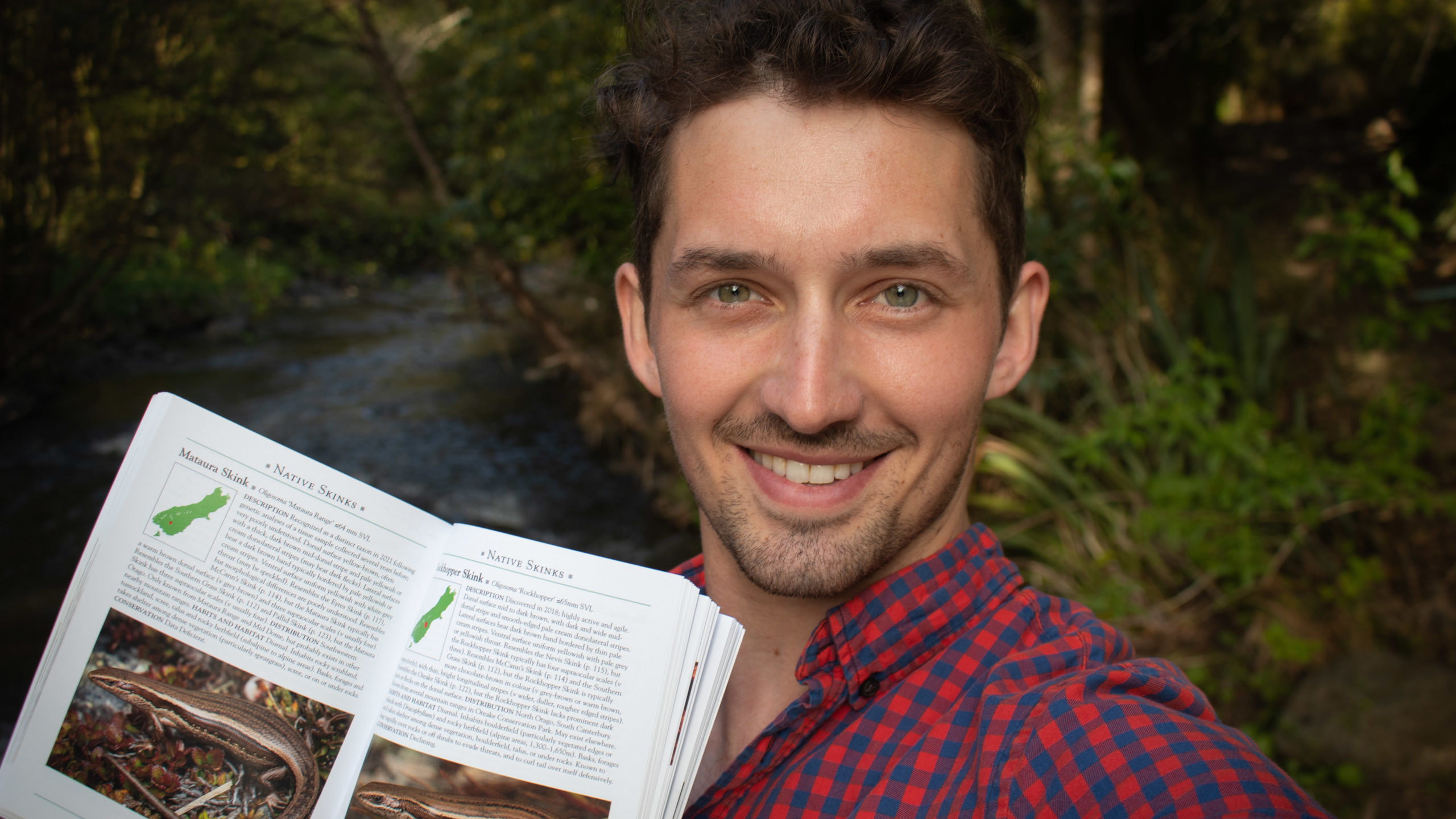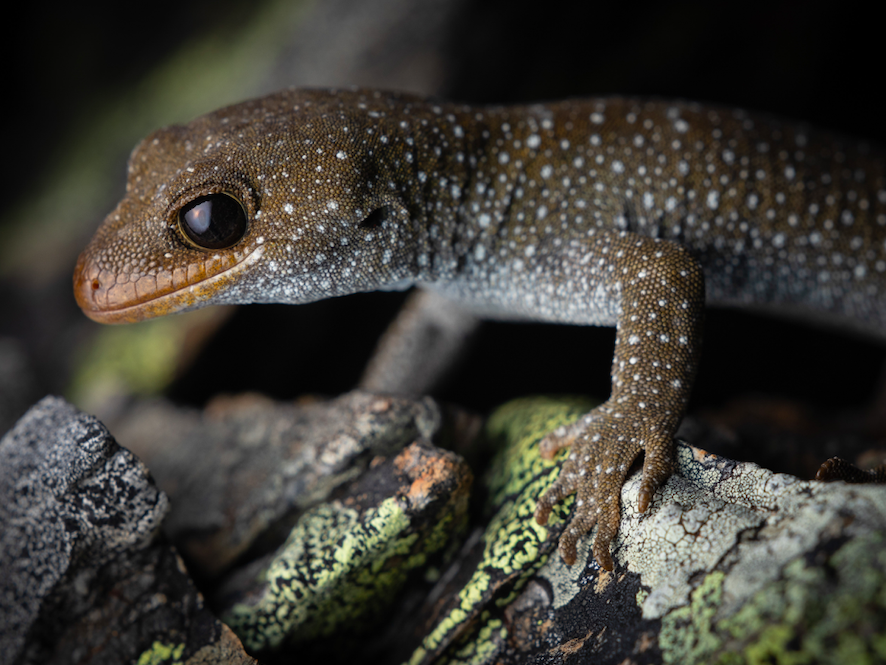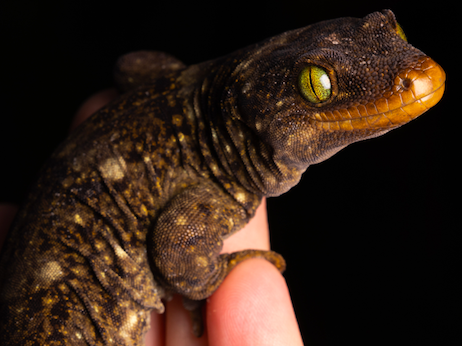The search for native reptiles is a bit like a Hollywood drama. There’s adventure and suspense, elation and heartbreak and sometimes, despite overwhelming odds, the main character gets what they’re after.

If anyone knows this, it’s Sam Purdie – even if he can’t find the words to describe it.

The herpetologist, wildlife photographer and science educator has spent countless hours in sometimes remote locations in pursuit of some of Aotearoa’s most elusive creatures.
“Often the adventure you’ve gone on is so long that you’re searching around at night, for two or three hours and you just haven’t found it, and you’re thinking, ‘Oh no, I don’t want to go home without seeing this thing’.
“Then all of a sudden you move your light across, and it’s there, and your heart starts pumping.
“It’s so, so thrilling. It’s something I would struggle to encapsulate with words because you feel it in your body. Sometimes the odds are stacked against you – sometimes a species you’re after hasn’t been seen in years, or they’re incredibly rare or incredibly difficult to find,” Sam says.
In those successful adventures, Sam returns with extraordinary portraits of our native reptile and amphibian species, many of which have been seen only a handful of times.
These images provide remarkable detail, revealing unique colourations and a rich diversity of species which is enough to impress budding naturalists to the most discerning reptile fanciers.
Sam shares these photos on Instagram, Facebook page and his website with detailed and informative captions providing a glimpse into the world of reptiles.
“There’s a lot of positivity, a lot of people learning about and appreciating our reptiles. I really hope people go ‘oh my goodness, we have 141 species of reptiles? I didn’t know we had lizards that big or colourful or that live on the tops of mountains or near the coast’.
“Many people think that New Zealand’s mostly limited to small brown skinks, but that’s not true at all.
“We have giant skinks that are 30 centimetres long with huge eyes and that are nocturnal.
“We have beautiful, bright green skinks that shimmer in the sun. We have amazing geckos that can be bright red in colouration or bright yellow,” he says.
A book is born

Many of Sam’s images now illustrate the most up-to-date and comprehensive field guide of Aotearoa’s known reptile and amphibian species.
A Naturalist’s Guide to the Reptiles & Amphibians of New Zealand also includes vital stats such as size, distribution, habitat, conservation status, and key markers to identify different species.
If you’re wondering what could need updating from previous field guides, it turns out quite a bit.
Funding for research into our reptiles and amphibians pales in comparison to our native birds, which means there are more big question marks about these species.
It was only last year that a Department of Conservation report assessing the conservation status of our reptiles recognised the existence of four reptile species.
But with so little knowledge about many of these species – some only known from a single animal sighting – there’s a great opportunity for discovery.
“I’m out there every summer looking for things, hoping that maybe I’ll find something cool,” Sam says.
“I’d love to discover something one day, but we’ll just see what the future holds.”
But for now, Sam hopes his field guide will be a valuable tool for fellow herpetologists or even anyone who isn’t interested in reptiles to learn to appreciate them more.
At the minimum readers will learn just how diverse our herpetofauna are.
Seek and you (may) find
Anyone keen to embark on their own reptile adventure needs to be prepared to get down to their level.
Sam’s reptile spotting tips:
- Be respectful of their habitat
- Check under rocks or logs which have a space underneath them
- Rocks or logs buried deep in the ground are unlikely to have reptiles, but may unearth other critters like spiders, centipedes or millipedes
- Put anything back as you found it, but be careful not to crush creatures when returning logs or rocks
- Spotlight for geckos or lizards in trees at night, though this can be difficult without some previous experience.
There are also ways to see reptiles without even leaving your home by creating a lizard-friendly garden.
The space should provide a range of native vegetation as well as places to hide from predators, such as stacks of rocks, rotting logs or slabs of bark.
Trapping predators and keeping pets indoors will also provide safe habitat for reptiles like lizards and skinks and help them thrive.

